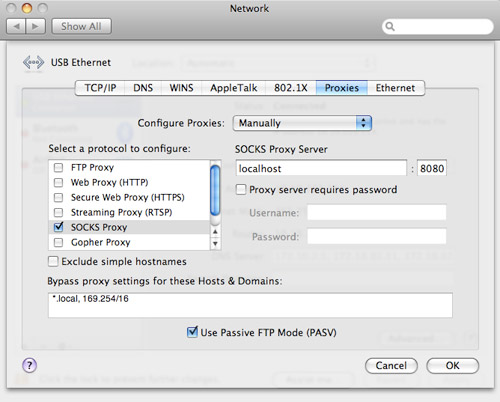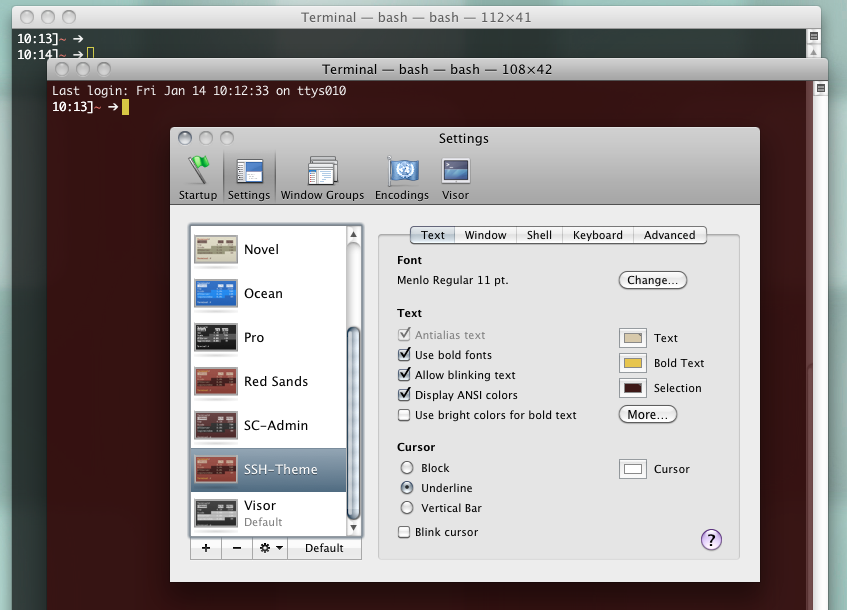
- How to get an ssh on mac how to#
- How to get an ssh on mac mac os x#
- How to get an ssh on mac mac#
- How to get an ssh on mac windows#
Are you sure you want to continue connecting (yes/no)? yes ECDSA key fingerprint is SHA256:dDmWU5MGZhIxAVEajRTRLSQvQ1OIbVN圓Et1FInpKVg. The authenticity of host ' (54.88.51.10)' can't be established. myfirstkeypair.pem should then get something like the message below. nameofyourprivatekey.pem ipaddress or hostnameįor example (this is one line): ssh -i. To SSH to your EC2 instance from your Mac, just go back to your terminal (or launch it again if you’ve closed it already), navigate into the directory that contains your private key file, and then enter: ssh -i. Once you’ve launched the instance, take note of its Public DNS hostname or Public IP address, as you’ll also be needing either one when you connect via SSH. I won’t go into the details of creating a Linux EC2 instance, as that should belong to a separate post, but once you launch such an instance, you need to select the key pair you created so that Amazon EC2 will know what private key file to expect when you connect via SSH.

You can now start using your private key to authenticate to your Amazon EC2 Linux instance via SSH. Navigate to the directory that contains your private key file and then enter: chmod 400 nameofyourpravatekey.pem
How to get an ssh on mac mac#
Launch the Mac terminal from the Dock or launch Mission Control (F4 button) and then go to Other > Terminal. Keep that private key file in a safe place and remember where you kept it, as you’ll need it every time you connect to your Linux EC2 instance via SSH.īefore you can use that private key file, you’ll need to change its permissions. Give the key pair a name and then click the Create button.Īs soon as the key pair is created, its name will be displayed among the list of key pairs and the private key will be automatically downloaded by your browser. Scroll down the left sidebar until you reach the Network & Security section and then click the Key Pairs menu. Generate Keys in Amazon EC2Įxpand the All Services drop-down and then click EC2 under the Compute section. Although you can generate a public-private key pair using a third party tool and then import the public key on Amazon EC2, we are going to go through the usual route which is to generate keys from Amazon EC2 itself. SSH logins are typically done through public key authentication, which requires users to have their private key on hand. We’re using a Mac, so some of our screenshots are going to be taken from a Mac UI.
How to get an ssh on mac how to#
In this post, we’re going to show you how to connect to a Linux EC2 instance via SSH. having no graphical user interface (GUI), you need to access them through the command line. Since many of these Linux instances are headless, i.e. To do that, I opened a Terminal window & created a symbolic link from ssh-agent to my home directory.For quite some time now, Linux and its derivatives or distros have been the most widely used platform in the cloud. The probably more correct place to do is to add it to my Login Items.

I added it to my Login Items without any success, and even adding a LoginHook to /etc/ttys did not make it start before Terminal loaded.īut, there is a workaround in that if I have ssh-agent start at login, I can quit & restart Terminal.app and it always connects, so that is what I have done.

I wanted to find a way to get ssh-agent started before Terminal.app opened.
How to get an ssh on mac windows#
That is a problem as it undoes all the good that saving all my windows did. The only surefire way to get ssh-agent to start is to close all your windows and then quit & restart Terminal.app with a completely blank slate. Further, if you quit Terminal.app, and re-open it, it won’t reliably open ssh-agent (I’ve had it happen a couple times out of the many times I’ve tested).
How to get an ssh on mac mac os x#
The only problem is that when Mac OS X boots back up and starts Terminal.app at login, ssh-agent is not started before Terminal.app starts, meaning I can’t log into servers using my SSH public keys. I use screen extensively on the servers I connect to, so I frequently don’t even lose what I was doing. I really love the option to “Reopen windows when logging back in.” In terminal, that means I get all my windows back! I do still have to reconnect to all the machines, but at least I can see where I was connected, and pretty much what I was doing. I recently upgraded to Mac OS X Lion, and things have been mostly positive. This is one of the reasons I hate rebooting–I lose all my connections & pretty much have to start over from scratch. Mac OS X Lion, Terminal and ssh: how to start ssh-agent at loginĪs a freelance sysadmin, I use Mac OS X’s Terminal.app to connect to a lot of different Unix and Linux servers–I will frequently have a dozen or two (or sometimes three) terminals open to different machines.


 0 kommentar(er)
0 kommentar(er)
